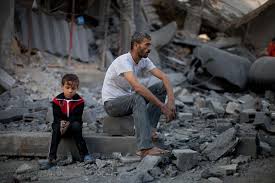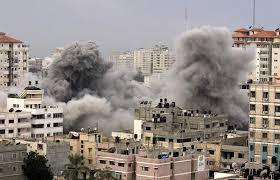Gaza is not in Africa, but it is very close to Africa
and what is happening in Gaza strongly affects part of Eastern African countries.
The tragedy of Gaza cannot be ignored by a web site like Africa ExPress.
For this reason we decided to publish this article
that explains the situation from someone who was living in Gaza for a year.
Special for Africa ExPress
Gaja Pellegrini-Bettoli
Beirut, 7 August 2014
The airstrikes (كاسيف, kassif) had already become a daily, or rather nightly, occurrence when I left Gaza a few days before the full escalation and beginning of the Israeli operation ‘Protective edge’ and Hamas’ response. (The original name in Hebrew is מִבְצָע צוּק אֵיתָן, Mivtza Tzuk Eitan, “Operation Firm Cliff” ). I had seen it before over the past year: the drones and F-16s hovering over and shelling were meant as intimidation, a warning. Still the building would shake and wake me up. The intensity of the airstrikes was limited however compared to the tons of explosives dropped on Gaza since the beginning of the escalation on 8 July.
For the past 31 days my schedule has revolved around checking the news, cross-checking it with updates from my friends and colleagues and trusted sources on site in Gaza. Rarely do the two accounts match. Usually it is a case of omission of information from mainstream media. I then start emailing the people I know in Gaza, asking the ritual and ridiculous question: ‘Are you ok? Are you safe?’ Of course not. Nowhere is safe in Gaza these days.
When I don’t hear back from people I turn into a ‘stalker’ on FB and twitter looking for signs of their recent activity. This is the only way I have to know they are safe. When I manage to reach them the first phrase they say is: ‘Thank god you are safe, good that you are not here’. As the number of casualties rises to nearly 2000 (figures vary according to sources with UN sources being lower), I egoistically hope my friends and colleagues are not among them.
Even the UN compound of UNRWA HQ was shelled (although the damage was limited) in addition to three strikes at schools sheltering civilians which belong to the agency, causing many innocent civilian casualties. According to UN statements the coordinates of the school bombed on 30 July and the plea to the Israeli forces not to bomb it, as it was sheltering civilians, was made seventeen times. This is a red-line, usually UN schools were considered a safe place.
The horror of these attacks was voiced by the agency’s spokesperson Chris Gunness, previously a war correspondent, in the course of an interview when he could not hold back the tears. I met him on a number of occasions; his genuine reaction expressed the feeling of many humanitarian workers on the ground.
[embedplusvideo height=”490″ width=”570″ editlink=”http://bit.ly/1rfwFgD” standard=”http://www.youtube.com/v/cu3lYK6OmMI?fs=1&vq=hd720″ vars=”ytid=cu3lYK6OmMI&width=570&height=490&start=&stop=&rs=w&hd=1&autoplay=0&react=1&chapters=¬es=” id=”ep2522″ /]
While the ceasefire, the first to actually be upheld, is on its third day, as peace negotiations are attempted in Cairo, the distraught civilian population is busy trying to bury their dead and stock on food and salvage belongings from their homes. According to UN figures, over a quarter of the population in Gaza (440,000 people) is now internally displaced and 1,814 people were killed.
[embedplusvideo height=”450″ width=”550″ editlink=”http://bit.ly/1rfweTA” standard=”http://www.youtube.com/v/nG4h_tvsLsg?fs=1&vq=hd720″ vars=”ytid=nG4h_tvsLsg&width=550&height=450&start=&stop=&rs=w&hd=1&autoplay=0&react=1&chapters=¬es=” id=”ep4950″ /]
On the ground in Gaza: the al Qassam Brigades
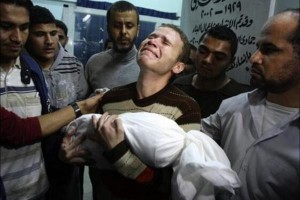 On 28 July the IDF (the Israeli Defense Forces), which Palestinians refer to as IOF (Israeli Offence Forces), warned international media not to leave their hotels, as their operations were intensifying. At the same time Hamas’ military wing, the Al Qassam brigades, continued their firing of rockets.
On 28 July the IDF (the Israeli Defense Forces), which Palestinians refer to as IOF (Israeli Offence Forces), warned international media not to leave their hotels, as their operations were intensifying. At the same time Hamas’ military wing, the Al Qassam brigades, continued their firing of rockets.
The Al Qassam brigades are the armed wing of Hamas, however their full ‘allegiance’ rests more with their own leaders in Gaza and with Khaled Machal who is now in Doha (previously based in Damascus until the war broke out in Syria). The political leader of Hamas in Gaza, Ismail Hanniye has maintained an extremely low profile throughout this escalation. The few interviews that have appeared in English media were mostly of Khaled Machal. The political and military wing are known for not always seeing eye to eye.
On the ground in Gaza, the name behind the resistance is Mohamed Deif. A previous stage actor, he is known for his ability to disguise and expertise in explosive devices. No recent picture of him can be found and verified. What is known is that he was wounded in an assassination attempt and is now relegated to a wheelchair.
While a few reporters, many freelancers, are doing a tremendous job offering unbiased and accurate updates, most main stream media is not. In addition, to be fair to those who are doing good reporting, Gaza cannot be deciphered by witnessing it only during war.
As mentioned in a tweet by journalist Gabriele Barbati, who was on the ground in Gaza, one of the tragedies claiming the lives of children playing in Shati camp (beach camp), was caused by a Hamas rocket (the witnesses’ names could not be disclosed). This refugee camp had children on Eid killed while playing (not to be confused with the tragic incident of the four children who were killed by the IDF while running on the beach). This news is credible as it is a fact that accidents firing rockets often claim the lives of the militants firing them. These accidents happen rather regularly during ‘peace’ time, although they only involve the militants firing them in those cases.
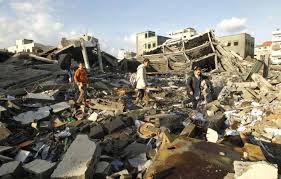 Many have reported on the dire situation at Shifa hospital overwhelmed with patients, understaffed and with constant electricity cuts. These basic obstacles are part of everyday life in Gaza, it is not an exception although the conflict has dramatically worsened the situation. While hospitals were always given priority and equipped with generators and fuel to run them, often staff would have to manually operate equipment such as ventilating machines for the patients’ breathing.
Many have reported on the dire situation at Shifa hospital overwhelmed with patients, understaffed and with constant electricity cuts. These basic obstacles are part of everyday life in Gaza, it is not an exception although the conflict has dramatically worsened the situation. While hospitals were always given priority and equipped with generators and fuel to run them, often staff would have to manually operate equipment such as ventilating machines for the patients’ breathing.
Some journalists have commented on the lack of clean water to shower. Again this is normal everyday life in Gaza. Most water is salty in the best case or/and polluted. This is not the consequence of the latest escalation but the result of 66 years of the world looking the other way. Even donor countries have developed a sort of ‘donor fatigue’ after pouring funds into Gaza for years and not seeing significant results. Over the course of the last year, Gaza was forgotten by the news, with funds from donors often being diverted to the Syrian crisis.
Civil society and economic situation
The majority of the population in Gaza is educated, there are five universities and the literacy rate is one of the highest in the entire Arab world. Civil society, youth in particular, with all the constraints of living under siege and under Hamas, is entrepreneurial.
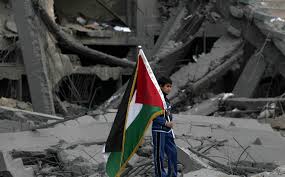 While the poverty line is expanding, particularly after the tunnel closure from Egypt into Gaza in July 2013, the infrastructure of society in terms of education exists to rapidly move beyond the current economic crisis under different circumstances. This was the case at least before the destruction that ‘Operation protective edge’.
While the poverty line is expanding, particularly after the tunnel closure from Egypt into Gaza in July 2013, the infrastructure of society in terms of education exists to rapidly move beyond the current economic crisis under different circumstances. This was the case at least before the destruction that ‘Operation protective edge’.
A study published by the Palestinian think tank al-Shabaka for example shows the presence of gas in Gaza discovered over 13 years ago (its use is denied to it even though the fields lie within its coastal waters).
People in Gaza cannot be labeled as pro Hamas, pro Islamic Jihad or pro Fatah. Supporters of all three groups of course exist among the population. As economic conditions deteriorate and life becomes impossibly difficult a growing number of civilians felt abandoned by their leadership. For this reason the escalation has benefited Hamas portraying it as fighting for the resistance of Gaza.
What is significant is that among the most educated and intellectual parts of society, particularly among the young generations, the conflict has marked them deeply. Among those who survived there is a clear sense of loss of ‘faith’ in international institutions and the Arab league, as well as an increased sense of communal pride for civil society in Gaza.
Witnesses from Gaza: Omar, Yasmeen, Asmaa and Belal
A young and dynamic woman, not affiliated with any political group, Yasmeen Khoudary, has authored a piecerecently where she stated:” We have lost all faith in support from the word or from the Arabs, who decided to summon up in an “emergency” meeting eight days through the offensive. We wake up in Gaza every morning to say: we in Gaza are well, how is your conscience doing?”
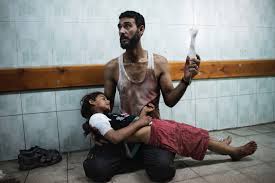 Another journalist, Omar Ghraieb, while waiting to learn about the outcome of the ceasefire wrote a piecewhere he stated:”This war has ruined and deformed so many definitions. Ceasefire meant massacres. And peace finally meant killing 1% of Gaza’s population while the world watched silently and castrated Arab leaders sent donations.”
Another journalist, Omar Ghraieb, while waiting to learn about the outcome of the ceasefire wrote a piecewhere he stated:”This war has ruined and deformed so many definitions. Ceasefire meant massacres. And peace finally meant killing 1% of Gaza’s population while the world watched silently and castrated Arab leaders sent donations.”
And a well-known anti-Hamas activist and journalist, Asma al-Ghoul, who received many prizes for her courage in denouncing practices of the de facto government in Gaza stated in a recent article: “If it is Hamas you hate, let me tell you the people you are killing have nothing to do with Hamas. If Hamas, in your eyes, is ordinary civilians and families, then I am Hamas, they are Hamas, we are all Hamas.”
Another talented young photographer, Belal Khaled, whose picture appears on the cover of this post, has tried to document the devastation of the last 33 days.
While each has its own view of society they all represent a dynamic and educated generation that has just been through this escalation. They are no longer the same people, the content and tone of their articles reflect this.
Palestinian poet Mahmoud Darwish captured the essence of this city when he said “Gaza is not the most elegant of cities nor the biggest, but it equals the history of an entire homeland. It does not compel people to cool contemplation but rather to explode in collision with reality. It will continue to explode. It is neither death nor suicide. It’s Gaza’s way of declaring it deserves to live.”
Gaja Pellegrini-Bettoli
twitter @gajap72

